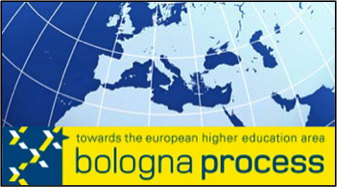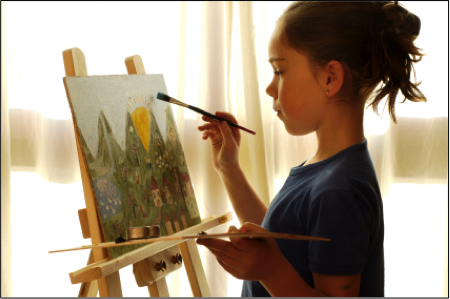Past and Present Research Projects
The Bologna Process

The Bologna Process is a major education reform movement which now involves 47 countries from Ireland and Luxembourg to Estonia and Lithuania. Among its major goals is to create a European Higher Education Area which is competitive with similar structures around the globe. It looks to foster mobility for students and enhance their prospects for employability in multiple sectors around the world. This research project examines the status of various components of the Bologna Agenda and comments on their success. The project will culminate in a book entitled Revolutionizing Global Higher Education Standards: Innovation and the Bologna Process forthcoming from Routledge/ Taylor & Francis.
Fulbright-Schuman Research Project

This project was conducted during 2014 and was funded by the Fulbright Schuman Program. It involved examining aspects of global education in schools in the European Union ranging from early childhood to higher education. The project looked at topics involving the technology in education as well as the impact of the PISA examination of education worldwide.
Code switching…hand switching: Handedness preference in bilingual children

Handedness preferences can be a marker for a variety of behaviors especially in children. This study probes whether there is a tendency for bilingual children who learned a second language early on (generally before age 7) to exhibit reduced tendency toward strong left- or right-handedness. Would they mix their hand behaviors for everyday tasks as they do their language behaviors? The study examines handedness preferences in a group of elementary school- aged children in an urban setting using the Edinburgh Handedness Preference as a survey instrument.
Rembrandt Effect

We know about the 'Mozart Effect,' that is the role of the transfer of music proficiencies to other domains, but could there be a 'Rembrandt Effect' as well? This study will probe the effects of instruction in the visual arts on literacy development in elementary school students. There have been several studies reporting positive transfer between visual arts instruction and developing abilities in linguistic domains but compelling evidence for a causal link still remains elusive. The proposed research study will investigate the role of training in visual art on two literacy skills, reading comprehension and writing fluency. Our intent is to conduct an empirical investigation that tests whether children involved in a scaffolded visual arts instructional programming will transfer skills developed through visual arts activities (e.g., observing, describing, perceiving, analyzing, interpreting, attention to detail) to reading comprehension and writing fluency. Reading begins with visual processing and the subskills of visual perception, attention, and analysis have been demonstrated as having increasingly vital effects on emergent literacy skills. Because of this, many believe that strengthening the powers of the visual will, in turn, strengthen literacy performance. We consider an important feature of the project to be its focus on strategies that relate to the enhancement of visual processing skills including visual attention, discrimination, detection, tracking, and perceptual skills and how this, in turn, can improve reading comprehension and writing fluency.
Smart Sleeping: A Comparison of Sleep Patterns in Gifted and Non-Gifted Children

The role of sleep and its importance in improving overall cognition in children has emerged as an important research issue. This study concentrates on an understudied and underserved segment of children, that is those who are intellectually gifted, to gain important information on interindividual differences in vulnerabilities to sleep difficulty and how this may impact on their cognitive profile. Results may begin to shore up a database generalizable to approximately 6% of the school population in the US or, roughly, 3,000,000 K-12 gifted children. The proposed study identifies a population of gifted children ages 8 through 12 and examines both their sleep patterns and attitudes toward sleep. It will endeavor to answer the following questions:
Are sleep patterns and behaviors for intellectually gifted children different from those of their non-gifted peers? If so, how do they differ? Are there effects for age, gender, and ethnicity?
Do gifted children experience increased vulnerability to sleep difficulties compared with their non-gifted peers and how might this impact on learning capacity and academic performance?
What are some major sources of sleep knowledge and do these differ between the two research populations?
The Role of Keyboard Training on Verbal Sequencing and Vocabulary Skills of Second Grade Students

The effect of music training on nonmusical aspects of cognitive development is amuch-debated topic. Several studies have reported positive associations between formal music lessons and abilities in nonmusical (e.g., linguistic, mathematical, and spatial) domains. Nonetheless, compelling evidence for a causal link remains elusive. The major aim of the proposed study is to examine the effect of music training on the vocabulary and verbal sequencing skills in diverse groups of second grade students. Two groups of students will be studied over a period of one school year. The first (treatment) group has studied keyboarding formally for a period of two years in the Music and the Brain Program. This program consists of music lessons delivered by a trained professional twice a week as part of the school curriculum. The second (control) group has had no exposure to music lessons either in school programs or in private study. Both groups will be assessed with subtests from the Structure of Intellect (SOI) measure that measure both sight vocabulary and verbal sequencing skills. Subjects will also be asked to complete the Edinburgh Handedness Inventory to evaluate hand preference. Results from this study will help to clarify the role of music study on specific cognitive skills and shed light on the question of the potential of music to enhance school performance in both verbal and spatial content domains.
Hand Preference in Musically Trained and Untrained Students

There is some evidence that patterns of handedness differ in individuals who are trained in specific talent areas such as music. This study examines handedness patterns in students attending New York City Public Schools. Students in grades three through six identified as musically trained and untrained completed the Edinburgh Handedness Inventory. This Inventory asks individuals to indicate their hand preference for such activities as drawing, writing, and throwing. Results are assessed in light of the developmental nature of handedness as well as the role that systematic and sustained music training may exert on hand patterns.
NEH Materials Development Project

Rembrandt: The Artist and Collections of his Art in America- This three year project, extending from 2005-2008, is funded by a grant from the National Endowment of the Humanities awarded to Long Island University. It will create a web site on artworks of Rembrandt located in museums and other collections across the United States. To bring this artwork to a nationwide audience, a Teacher Advisory Council will work with a cohort of museum educators and university scholars in the fields of art history, art and aesthetic education, social studies, and technology to mine this resource of ‘American’ Rembrandts, developing instructional materials for teachers. The web site will include digitized curriculum modules, artworks, biographical timelines, bibliographies, maps, slide shows, activity sheets, and primary source documents. It will also reference links to individual state content standards, virtual museums, online publications, and graphics software. Targeted at grades 6-12, it will build and increase teacher capacity to network knowledge of Rembrandt’s art with regional, state, and national content and performance standards in visual art and social studies to improve student achievement and extend proficiency in curriculum areas. The Project rollout will converge with events held to commemorate the four- hundredth anniversary of Rembrandt’s birth in 2006.